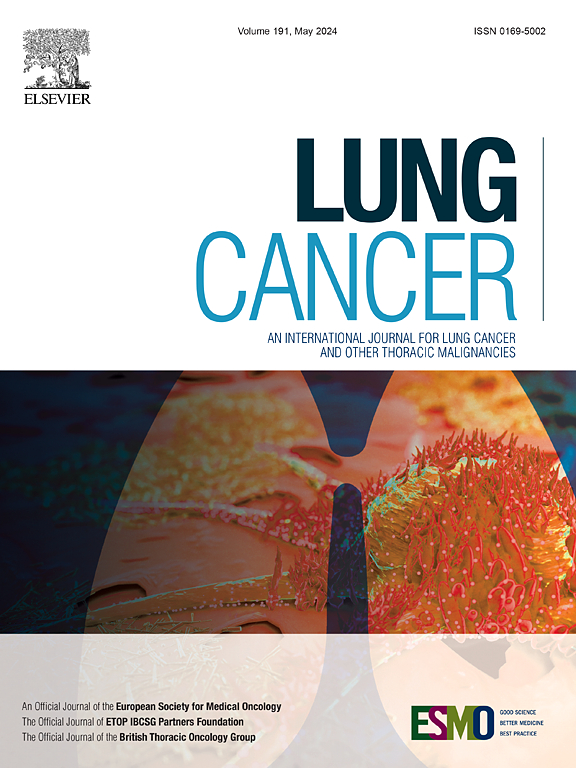Evaluating the safety of antibody-drug conjugates in lung cancer: A systematic review and meta-analysis
IF 4.5
2区 医学
Q1 ONCOLOGY
引用次数: 0
Abstract
Background
Antibody-drug conjugates (ADC) have emerged as a promising treatment for lung cancer. However, their safety profile requires further analysis. This study assessed adverse events (AE) in patients with lung cancer treated with ADCs, with particular focus on differences in pathological types, therapeutic options, and drug components.
Methods
Prospective trials from various databases up to June 11, 2024, that analyzed treatment-emergent AEs (TEAEs), treatment-related AEs (TRAEs), mortality, and drug discontinuation were identified. Incidence rates were pooled using a random effects model, and their corresponding 95% confidence intervals (CIs) were calculated.
Results
The analysis included 28 studies with 3,127 participants. The pooled incidence of all-grade TEAEs and TRAEs was 98.9 % and 91.4 %, respectively, whereas that of grade ≥ 3 TEAEs and TRAEs was 65.9 % and 41.7 %, respectively. The gastrointestinal system was frequently involved, albeit predominantly in low grades. Hematological system involvement was prevalent in grade ≥ 3 AEs, with respiratory system disorders being more prevalent in severe AEs. Respiratory system disorders were the primary cause of death and drug discontinuation. Subgroup analyses revealed higher incidences of AEs in SCLC than in NSCLC, in combination therapies than in monotherapies, and in ADCs with cleavable linkers. ADCs targeting delta-like protein 3 or carrying pyrrolobenzodiazepine dimer as payloads exhibit higher incidences of grade ≥ 3 TEAEs than those targeting HER2.
Conclusion
Effective managing ADC toxicities is crucial in lung cancer treatment, with AE incidence and profiles varying by cancer pathology, treatment regimen, and ADC components. Close monitoring of symptoms associated with gastrointestinal, infection, and respiratory systems is essential.
PROSPERO registration number: CRD42024546210

求助全文
约1分钟内获得全文
求助全文
来源期刊

Lung Cancer
医学-呼吸系统
CiteScore
9.40
自引率
3.80%
发文量
407
审稿时长
25 days
期刊介绍:
Lung Cancer is an international publication covering the clinical, translational and basic science of malignancies of the lung and chest region.Original research articles, early reports, review articles, editorials and correspondence covering the prevention, epidemiology and etiology, basic biology, pathology, clinical assessment, surgery, chemotherapy, radiotherapy, combined treatment modalities, other treatment modalities and outcomes of lung cancer are welcome.
 求助内容:
求助内容: 应助结果提醒方式:
应助结果提醒方式:


